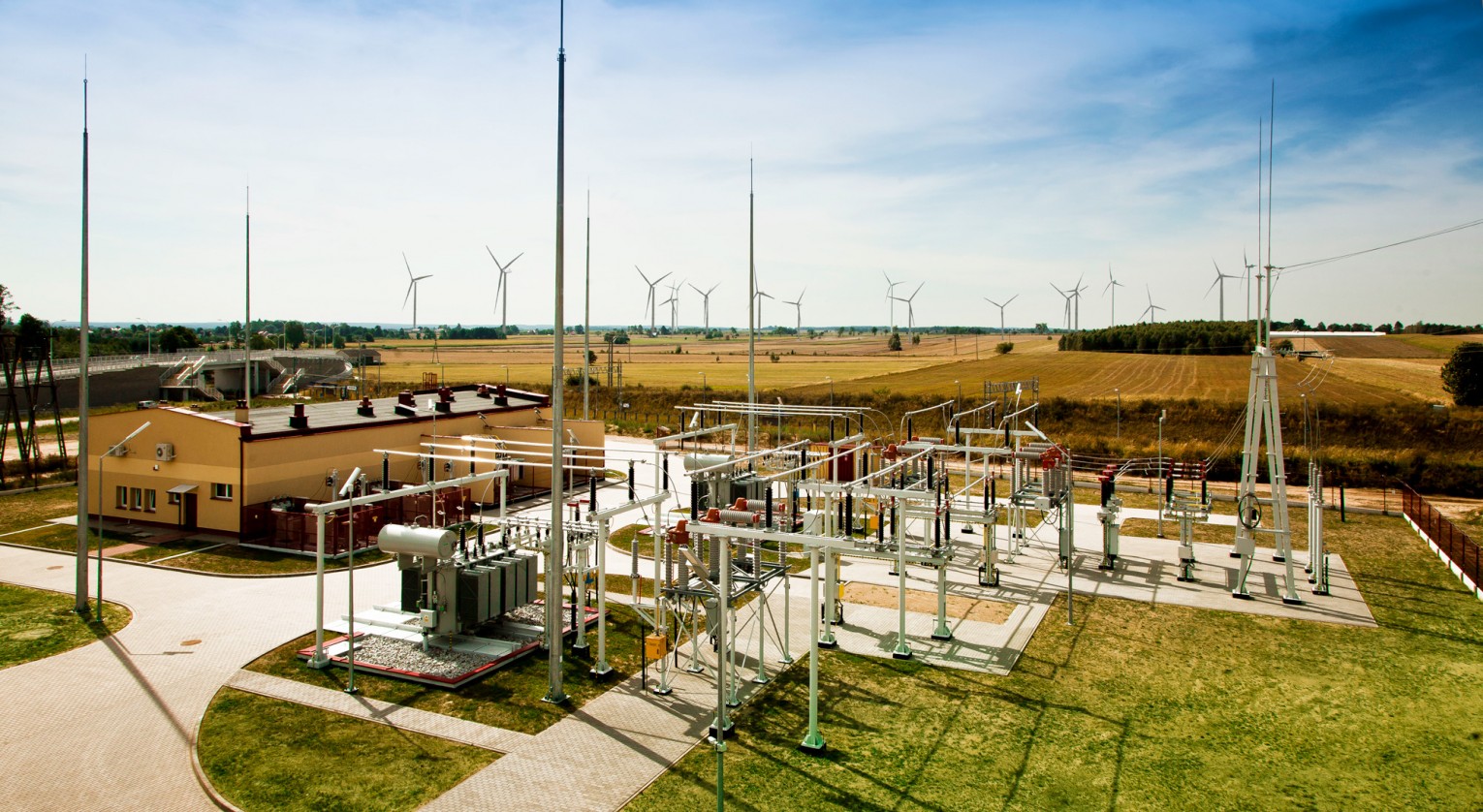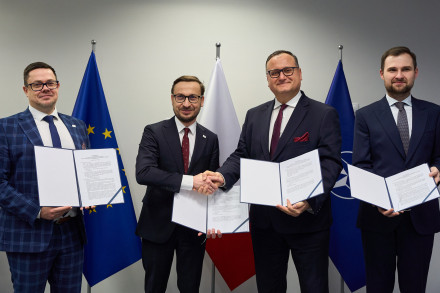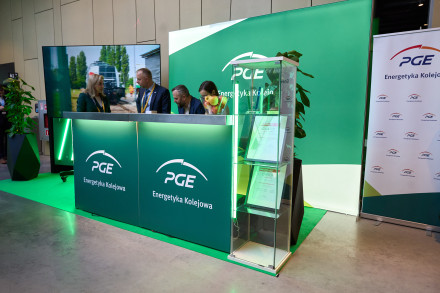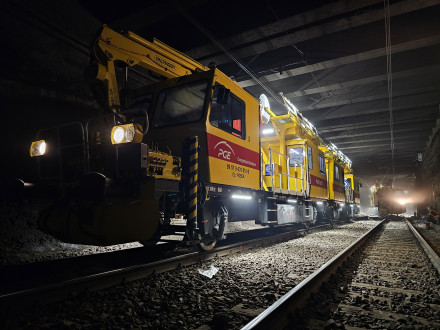PKP Energetyka develops innovation in the cloud
13.01.2022, 13min read

Thanks to renewable energy, the Polish railroad is becoming an even greener mode of transportation. The Green Rail Program, implemented by PKP Energetyka, consists of a number of investments - including the construction of traction energy storage facilities to stabilize the availability of renewable energy for rail crossings. Efficient operation of the energy distribution system, including data collection, management, processing and analysis is supported by Microsoft's Azure Machine Learning, IoT and Power BI platform tools and technology partner Elitmind.
The energy transformation of Poland's railroads towards RES means that traction energy supplied to carriers will be generated from renewable sources: photovoltaic and wind farms. This process requires a parallel change in the approach to distribution of traction energy, which is changing from conventional and unidirectional is changing to distributed and unstable.
"Sun or wind, the basis of RES, are very "capricious" sources - they have time-varying availability and power output. Meanwhile, trains are a very demanding consumer. Railroad crossings are not continuous, like house or street lighting, but pulsed. This means that the distribution network feeds a passing train with very high power and for a short time, after which it is again unloaded," says Maciej Rudko, director of PKP Energetyka's Financial Planning and Analysis Office.
Moreover, a speeding train consumes more energy than one traveling at a constant speed. The combination of RES supply and rail energy demand is therefore a very dynamic and complex process, which requires modern solutions based on appropriate metering and analysis of data collected in real time.
"Green Railway is a program of PKP Energetics that combines activities for reliable rail transportation with environmentally friendly technologies. It is a confirmation of the twin transformation trend, which combines innovation in the field of energy and digital technologies, creating optimal conditions for realizing the potential of both, driving the growth of companies and the economy as a whole. Energy companies have huge amounts of data at their disposal to modernize services - to forecast energy production and support business decision-making. The benefits are felt by customers and the environment. Microsoft supports customers on the road to carbon neutrality and, together with partners, invests in the development of tools and solutions that lead to the elimination of carbon emissions," says Ewa Drozd, board member at Microsoft's Polish branch.
Europe's largest rail "powerbank"
In the process of stabilizing the availability of renewable energy for rail transit, storage facilities play an important role, taking in excess energy and releasing it when demand arises. PKP Energetyka launched its first traction energy storage facility for railroads in Lower Silesia in early July last year. It powers nearly 1.5 thousand runs of both regional and long-distance passenger trains and freight trainsets every month. The railroad "powerbank" is the largest facility of its kind in Europe. It is the first such large storage facility operating with a 3 kV DC grid. Similar infrastructure is in operation in Japan, for example, but its capacity and importance for the safety of the railroad power grid are smaller. The power of PKP Energetyka's energy storage would be enough to power 55,000 traditional 100-watt light bulbs, 110,000 dishwashers or 2,000 electric ovens.
"Ultimately, we plan to put into operation about 300 such warehouses across the country. This is necessary in order to efficiently power the Polish railroad with green energy. They will be diversified in terms of capacity and power," says Marek Kleszczewski, PKP Energetyka board member.

The digital power of railroads
The operation of PKP Energetyka's entire distribution system is supervised by an advanced SCADA (Supervisory Control and Data Acquisition) IT system, which is the link between the OT (Operation Technology) layer and the IT infrastructure. It ensures optimal operation of the system, and collects data and parameters of its functioning. Data analytics in this process is supported by Microsoft's Azure and Power BI tools.
"By combining the strengths of an innovative energy company with modern energy distribution at its heart with Microsoft cloud technology, PKP Energetyka can collect, manage, process and analyze data from various sources through a user-friendly interface. With a range of solutions to manage distributed energy sources and secure adequate amounts of energy for the railroad, the company is technologically ready to implement the Polish Green Rail Program," says Maciej Rudko.
The Microsoft Power BI application ecosystem, based on the Microsoft Azure cloud platform supported by modern technologies such as the Internet of Things (IoT), artificial intelligence (AI) and machine learning (ML) are expected to allow the organization to implement, to the fullest extent possible, a data-driven management culture.
"Microsoft Power BI turned out to be the tool we were looking for. It is fully tailored to the business user, flexible and intuitive. It allows us to present data in a friendly, management-efficient way. In addition, it has a functional mobile application," assessed Andrzej Nowak, an expert in the Financial Planning and Analysis Office at PKP Energetyka.
The implementation of Power BI paved the way for the use of further advanced cloud technologies. As part of a project with Microsoft and Elitmind, it was decided to use Azure Machine Learning to build algorithms for forecasting energy production from photovoltaic panels in order to better balance the rail power system. The project required involvement and coordination from several internal departments of PKP Energetyka as well as external entities: Elitmind responsible for the implementation of Microsoft Azure analytical environment and Power BI reporting, the Institute of Meteorology and Water Management as a weather data provider, a company supporting data acquisition from PV panels, and the owner of photovoltaic farms.
"The challenges of this project were in many areas, from integrating data from IoT systems, its appropriate analytical interpretation, and providing expertise in building a forecast model. We took advantage of the best of the Azure cloud and Power BI, which is flexibility and high performance at a reasonable cost. On the other hand, the good atmosphere and professional team of PKP Energetyka fostered joint creativity," recalls Robert Wozniak, CEO of Elitmind.
Innovation ecosystem
The implementation of Microsoft Power BI at PKP Energetyka is still in progress. A broad data governance model is currently being developed based on the framework recommended by Microsoft. The company's digitization plans are large-scale and are part of the innovation ecosystem, where system changes are followed by business results. The organization is relying on e-learning provided by Elitmind to train more than 50 users, who will be responsible for providing data in the form of reports and creating visualizations in specific business areas. However, in order to have oversight over the development of self-service BI, PKP Energetyka is also introducing a process of certification of reports by designated units that verify whether they can be made public inside or outside the organization. Microsoft Power BI is becoming more and more widespread in the organization: currently it is already used by approx. 300 users.
"Everything is designed to translate the acquired data into information so that we can make the right business decisions. This data should be of high quality and available in real time. This is what our needs and ambitions are, so that we can better fulfill our mission 'to support the development of the Polish railroad,'" Marek Kleszczewski adds.
The effect of using business intelligence tools is to facilitate the achievement of the goals included in the company's strategy until 2030, including above all the implementation of the Green Rail Program. In turn, it will benefit everyone, because the average annual reduction in CO2 emissions achieved by the program in 2021-2030 will reach about 800,000 tons. This, in turn, corresponds to almost 34 thousand hectares of forests absorbing carbon dioxide, an area three times larger than the Bialowieza National Park.
State-of-the-art rail infrastructure diagnostics, helicopters and drones for examining the power grid, or the use of a system that predicts the occurrence of failures are all solutions already being used by the company today. A culture of innovative thinking and action was incorporated into the organization from the beginning of the transformation process. PKP Energetyka has set its sights on innovation, systemically seeking new solutions inside and outside the company.
"We assumed that we wanted to be in the world's premier league of infrastructure solution providers. We would not have achieved this goal without the strong support of the innovation area." - Marek Kleszczewski says.
PKP Energetyka is the integrator and coordinator of the Green Railway Program, established two years ago by the Center for Railway Energy Efficiency. The goal of the Program is for rail carriers to achieve an 85% share of energy from renewable sources by 2030, with a target of 100%.
Article on Microsoft website: https://news.microsoft.com/pl-pl/2022/01/13/pkp-energetyka-rozwija-innowacje-w-chmurze/






